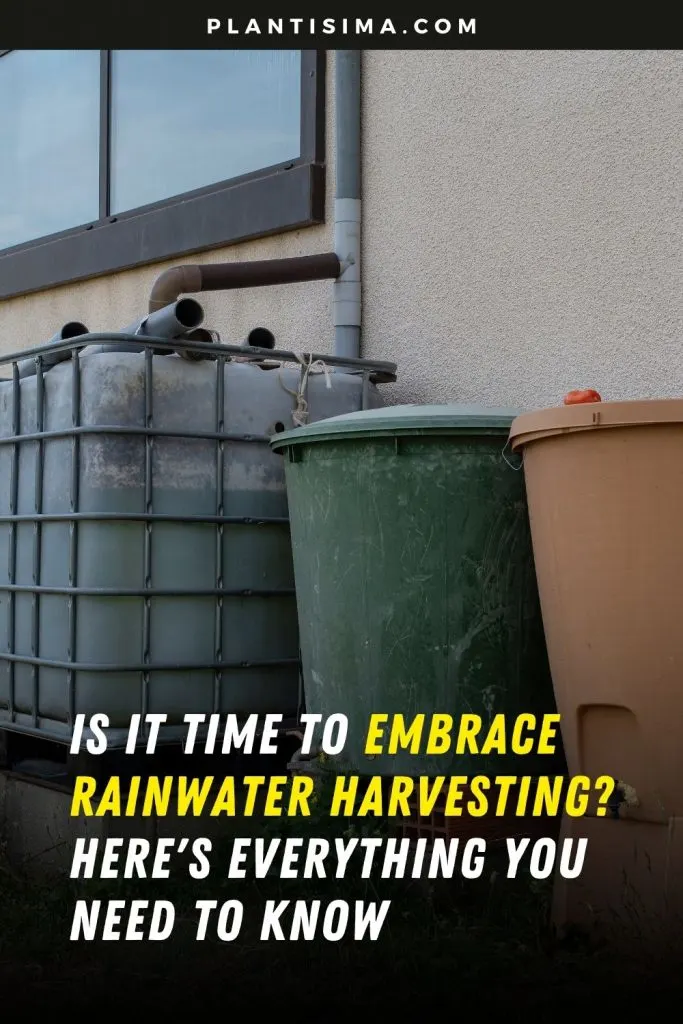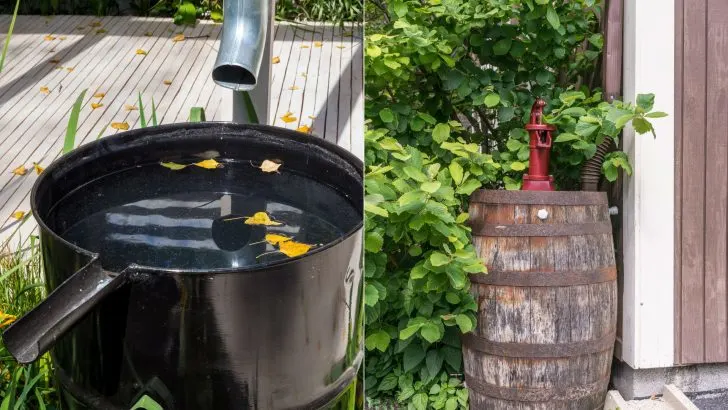Watching the rain pour down can remind us of nature’s power and its nurturing influence on everything that grows. But it also makes you wonder—what can we do with all that water? The answer: catch it!
Rainwater harvesting is a smart investment that can help you save money on your water bill while making good use of a natural resource.
Did you know that if around 10 inches of rain fall on a 1,000 square foot area, you can collect roughly 6,000 gallons of water in a year? That’s a significant amount!
So, how exactly do you harvest rainwater? Let’s dive in.
Why Collect Rainwater?
There are many advantages to collecting rainwater, making it appealing for homeowners, gardeners, and environmentally conscious individuals alike.
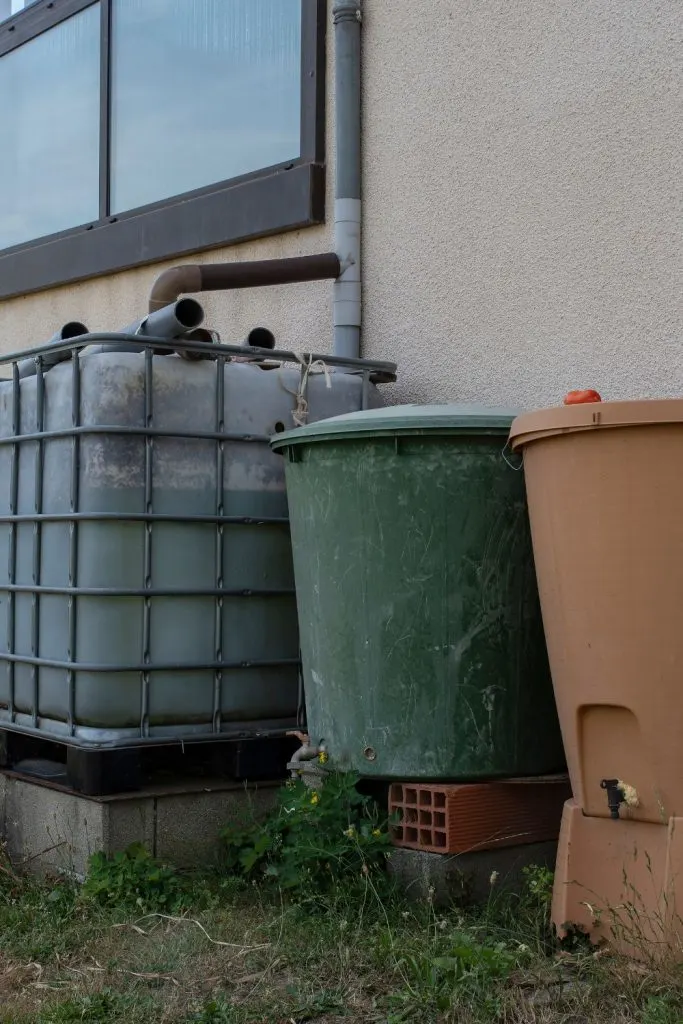
For example, you can connect your tank or barrel to a drip irrigation system, making plant watering almost effortless. With a proper filtration system, harvested rainwater can also be used for livestock, toilet flushing, cooking, and even drinking. It’s a win-win for the environment and your wallet.
Here are some key benefits of rainwater harvesting:
• Better Plant Health: Rainwater is free from chlorine and fluoride, which can accumulate in plants and lead to poor water absorption.
• Water Conservation: Using rainwater for irrigation helps conserve municipal water, which is especially valuable in areas prone to restrictions or droughts.
• Emergency Supply: During water shortages or service interruptions, rainwater can be a lifesaver.
• Lower Bills: By replacing tap water with rainwater for tasks like plant watering, toilet flushing, or even laundry, you can significantly reduce your water bill.
While rainwater harvesting comes with many advantages, it’s important to note some challenges. The initial setup can be costly, and regular maintenance is needed to ensure the water remains clean. If you plan to drink the harvested water, proper filtration is required, which can add to the cost.
What to Consider Before Setting Up Rainwater Harvesting
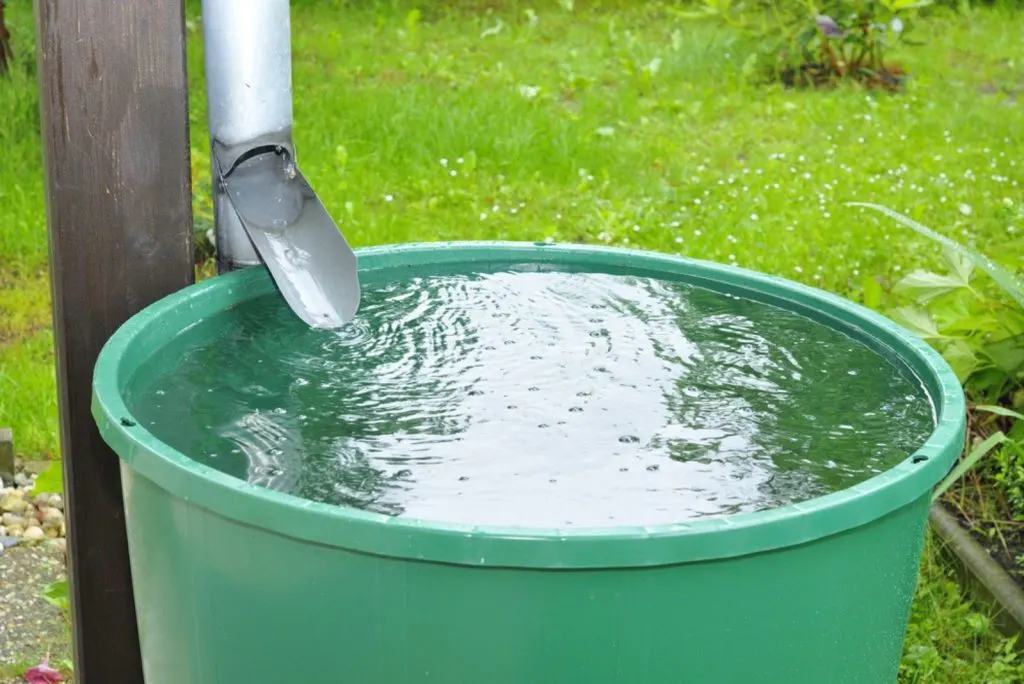
Before jumping into a rainwater harvesting project, there are a few things to keep in mind. Here are some potential challenges:
• Initial Costs: The setup can be expensive depending on the complexity of your system.
• Space Requirements: Tanks or barrels can be quite large, so you’ll need enough space to accommodate them.
• Maintenance: Regular cleaning of gutters, pipes, and filters is crucial to keep the system running smoothly and the water clean.
• Filtration: If you plan to use the water for drinking, a filtration system is essential, adding to the overall cost.
How to Collect Rainwater
You can purchase a complete rainwater collection system or create your own with a bit of DIY know-how. Here are some common methods:
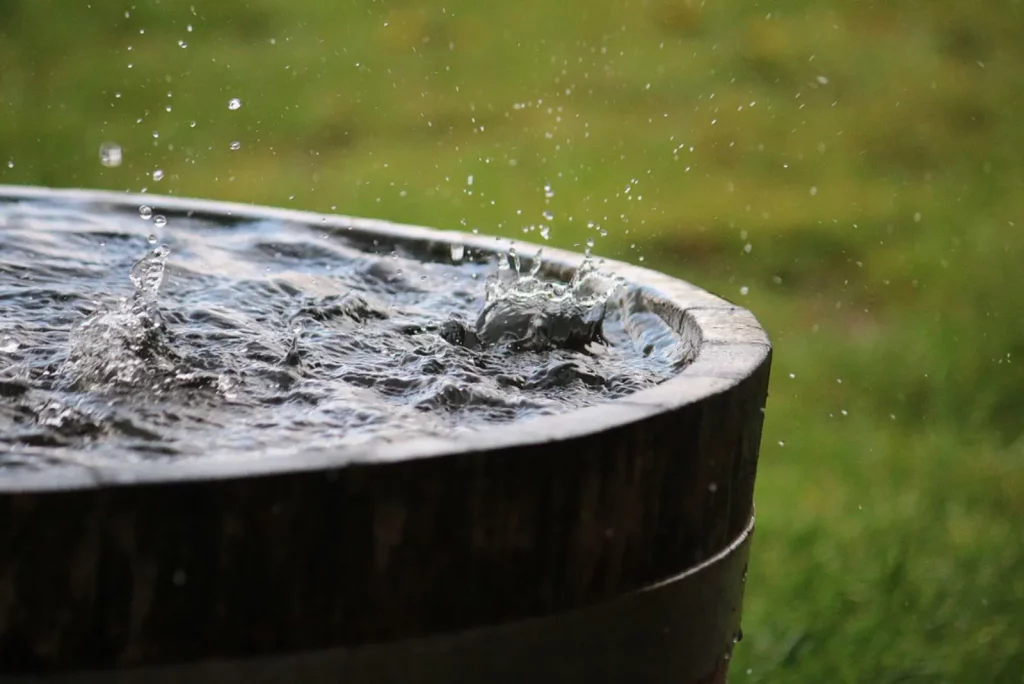
• Rooftop Rainwater Collection: This is the most common method, where water is collected from your roof and directed into a barrel or tank via gutters and pipes.
• Rain Barrels: The simplest and most affordable method is using rain barrels placed under your downspouts to capture water.
• Rainwater Tanks: Larger tanks can store more water, making them suitable for household use. While more expensive than barrels, they offer a more substantial water supply.
• Underground Storage Tanks: For those with higher water demands, underground tanks provide a discreet way to store large amounts of water.
• Rain Gardens: These specially designed landscapes use plants and soil to capture and filter rainwater.
• Dry System: In this system, rainwater flows into a tank, and the gutters dry out between rainfalls.
• Wet System: Here, the gutters always remain filled with water, with the tank or cistern often located further away from the collection point.
Post-Harvesting Care
Once you’ve collected the rainwater, it’s time to put it to use! You can use it for watering your plants, flushing toilets, or cleaning patios without any additional treatment.
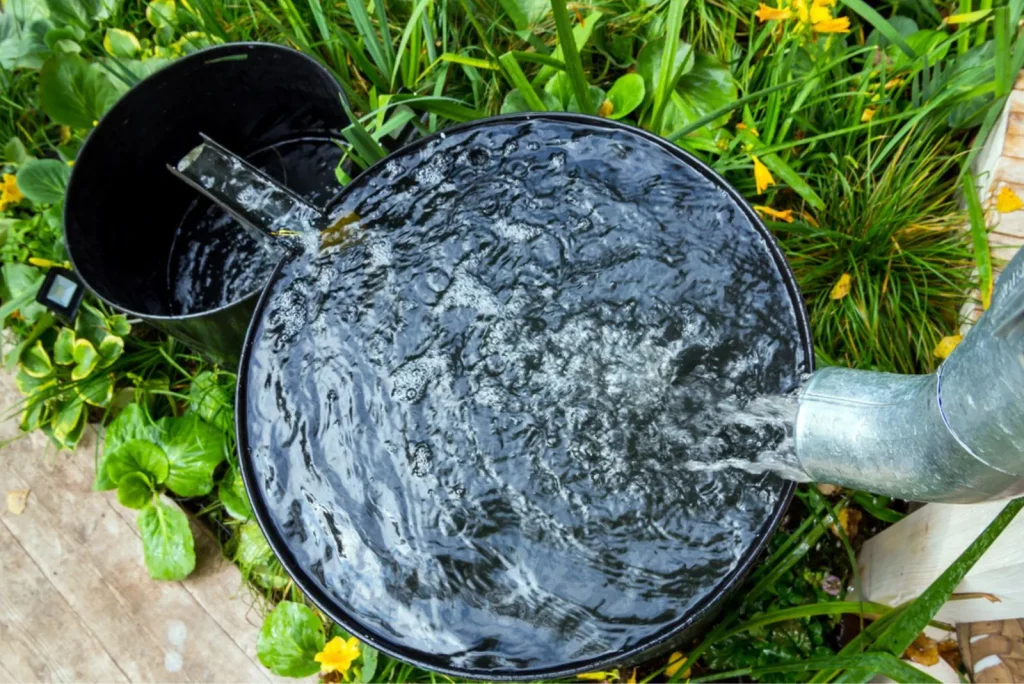
However, if you want to use it for drinking or cooking, it must be properly filtered, even if it looks clean. Rainwater can contain harmful microbes, chemicals, or other contaminants, so filtration is essential.
How to Purify Rainwater
There are several ways to purify rainwater, depending on its quality and how you plan to use it. First, you’ll want to prevent debris from entering your collection tank using gutter guards or screens. After that, you can treat the water through various methods:
• Boiling: This simple method kills harmful microorganisms, but it doesn’t remove chemicals or toxins.
• Filtering: Advanced filtration systems, like carbon or ceramic filters, can remove some germs and chemicals. However, simpler filters, like cloth filters, only remove visible debris.
• Distillation: Boiling the water until it evaporates and condenses again will remove most impurities, including chemicals and microbes.
• Chemical Treatment: Adding iodine or chlorine to rainwater can kill bacteria and other pathogens but won’t remove chemicals.
• UV Treatment: This method is effective for killing germs and is often used in homes with private wells or rainwater collection systems.
Is Rainwater Harvesting Legal?
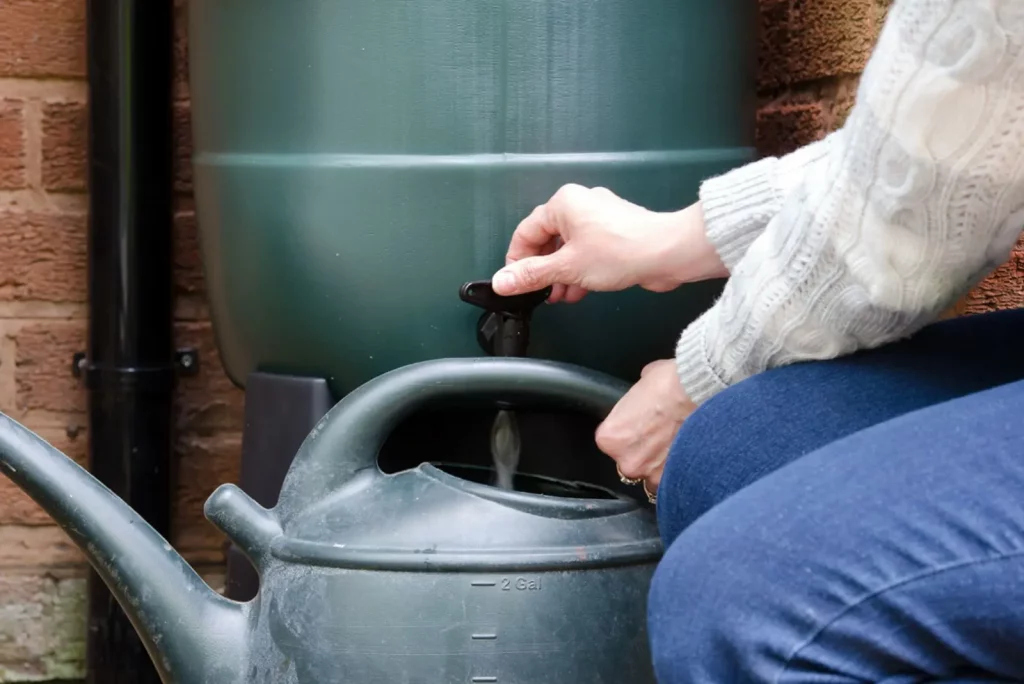
In the United States, rainwater harvesting is generally legal and encouraged in many states as a sustainable way to conserve water. However, regulations can vary widely depending on where you live.
• State Regulations: Some states, like Colorado and Utah, have stricter regulations due to water rights laws, while others actively promote rainwater collection with incentives. Always check your state’s specific laws to ensure compliance.
• Permits: In some areas, you may need a permit or approval to set up a rainwater collection system, especially if you plan to use the water for drinking or other household uses.
• Local Guidelines: In some municipalities, there are rules regarding how harvested rainwater is handled and whether it can be drained into the local sewer system. Make sure to verify your city or county’s regulations.
• Separate from Sewage: It’s essential to keep harvested rainwater separate from any sewage systems to avoid contamination and comply with local health and safety codes.
Understanding your state and local rules will help you set up a compliant and efficient rainwater harvesting system while avoiding potential fines or legal issues.
